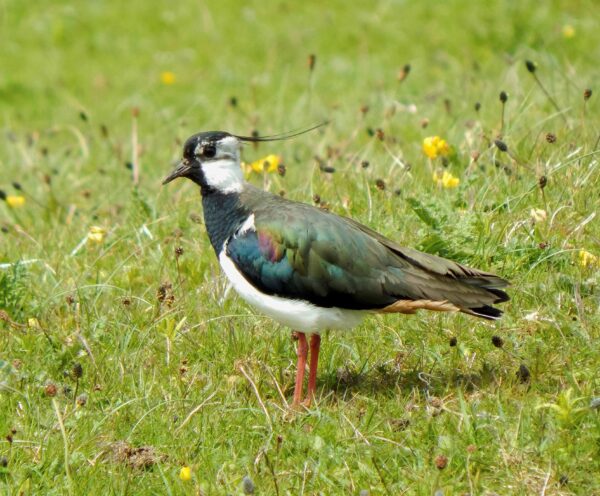A strategic shift in wildlife-friendly farming approaches is vital for the recovery of England’s farmland bird populations, as highlighted by a study led by the RSPB.
Published in the Journal of Applied Ecology, the paper, supported by the BTO and funded by Natural England, observed the response of farmland bird populations to various levels of agri-environment schemes across arable, pastoral, and mixed farming landscapes.
The UK government has recently set a legally binding target to halt species abundance declines in England by 2030, aligning with ongoing discussions about similar time-bound EU targets. Given the sharp decline of once-common farmland birds like Starlings and Skylarks, there is an urgent need to swiftly implement effective conservation measures throughout the farmed landscape. This includes initiatives within the newly developed Environmental Land Management Schemes currently undergoing testing and implementation in England.
In a pioneering decade-long exploration, researchers delved into the intricate dance between farmland birds and bird-centric agri-environment schemes, unveiling a tapestry of insights that could redefine our approach to conservation.
The canvas unfolded with higher-tier schemes, where 11% of farms embraced avant-garde bird-friendly measures, eclipsing the modest <4% in lower-tier counterparts. From seed-rich winter havens to insect-laden chick nurseries and cozy nesting grounds for ground-nesting virtuosos like Lapwing, these measures were tailored, accompanied by bespoke advice for higher-tier farms.
The narrative took an unexpected turn, revealing that a 10% dedication to bird-friendly practices under the higher-tier scheme orchestrated a symphony, lifting over half of the farmland bird species in two out of three regions. While the lower-tier vignette painted a different picture – not quite the crescendo – it played a supporting role, cradling declining species when the rest of the landscape remained devoid of avian support.
As the study’s second act unfolded, the question echoed: What swathes of the farmed canvas need the strokes of higher-tier agreements to compose a 10% recovery in farmland birds over a decade? The answer resonated differently across pastoral West Midlands (26%) and arable East Anglia (31%). Yet, an ingenious twist emerged – a cost-saving masterpiece. By targeting higher-tier agreements to farms already boasting high numbers of priority farmland birds, the canvas transformed, requiring only 17% and 21%, respectively.
Lead orchestrator of this avant-garde study, Dr. Rob Hawkes, the maestro of RSPB Conservation Science, shared, “This is the first study to ask the question – how much nature-friendly farming is needed in the English landscape to recover our depleted farmland bird populations? Agri-environment schemes can only recover farmland birds if sufficient bird-friendly habitat is provided at both the farm and landscape scales. There needs to be better, more strategic, thinking when agreeing these nature-friendly packages.” The stage is set for a new era in the conservation symphony, where each note is a deliberate brushstroke on the canvas of nature-friendly farming.

The study issues a cautionary note, particularly for species with specific needs such as the Turtle Dove, emphasizing the necessity for precisely tailored habitat management targeted at sites where these species still cling to existence. The generic bird-friendly measures explored in this study yielded no discernible benefits for the Turtle Dove.
Alice Groom, RSPB Senior Policy Officer, remarked, “This research has landed as Governments from the four UK countries develop new agricultural policies to replace the EU’s Common Agricultural Policy. This provides a critical opportunity to design future agri-environment schemes that are effective and deployed at a sufficient scale to recover farmland wildlife. Welsh Government has proposed making the 10% farm scale provision a universal element of the Sustainable Farming Scheme. In England, Defra has yet to set out how they will ensure the new Environmental Land Management scheme (ELM) contributes to the new legally binding targets to halt the loss of species abundance by 2030 and reverse it by 2042.”
While the study specifically assessed the impact of bird-friendly farming initiatives on farmland bird populations, the authors posit that these initiatives, along with other wildlife-friendly schemes, extend their benefits beyond wildlife alone. Nature serves as the bedrock for food production, offering ecosystem services like clean water and enhanced soils crucial for sustaining agriculture. In essence, nature holds the key to fortifying the resilience of the farming sector.
